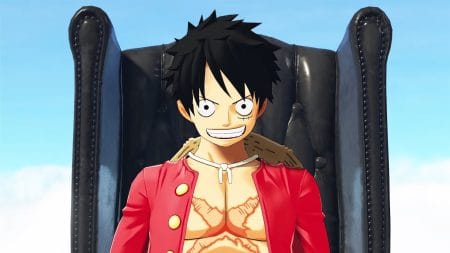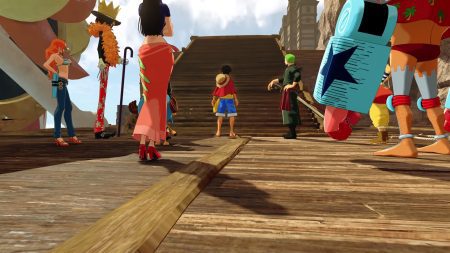We Are Hope
Over the weekend at Jump Festa 2018, Bandai Namco released the first ever trailer for One Piece: World Seeker. The game, which was unveiled in the December 11 issue of Weekly Shōnen Jump, stars Monkey D. Luffy in what Bandai Namco describes as “an expansive and seamless world” as well as “the biggest One Piece game to date.”
The trailer, while brief, provides several tantalizing glimpses into the world and combat of World Seeker. You can watch it in its entirety here:
It isn’t much of a secret that anime video game adaptations haven’t fared well over the years, let alone One Piece ones. From the musou-based Pirate Warriors series to the more recent Unlimited World Red and Burning Blood, the One Piece video games continue to tread water with bland graphics, repetitive combat, and uninspired storytelling. For years, One Piece fans like myself have been clamoring for a video game that captures the likeness of the show without compromising on fun and engaging gameplay.
One Piece: World Seeker may very well be that game.

A New, Confident Style
From the onset of the trailer, we see camera pans of the game’s various locations, from a port harbor and forest to grassy fields and a Marine base. Right away, it’s clear that World Seeker is going for a much more realistic style with its world design than any One Piece game that has come before.
We also catch a glimpse of some NPCs, from people patrolling the docks to farmers harvesting their seasonal crop. Like past games, characters appear cel-shaded, a common practice for game artists trying to replicate the visual style of an anime series (for a popular example, look no further than CyberConnect2’s Naruto: Ultimate Ninja Storm franchise).
At first glance, this may seem like a recipe for disaster. Cel-shaded characters portrayed against realistic backdrops? It’s a distinct style that runs the risk of alienating those accustomed to the bright colors of the source anime. But when the trailer pulls out to show Luffy looking over a sprawling town and its nearby Marine fortress, my fears were quickly quelled. Although a stark contrast from the style of the One Piece source material, World Seeker exudes a confidence and uniqueness unseen before in a One Piece game.
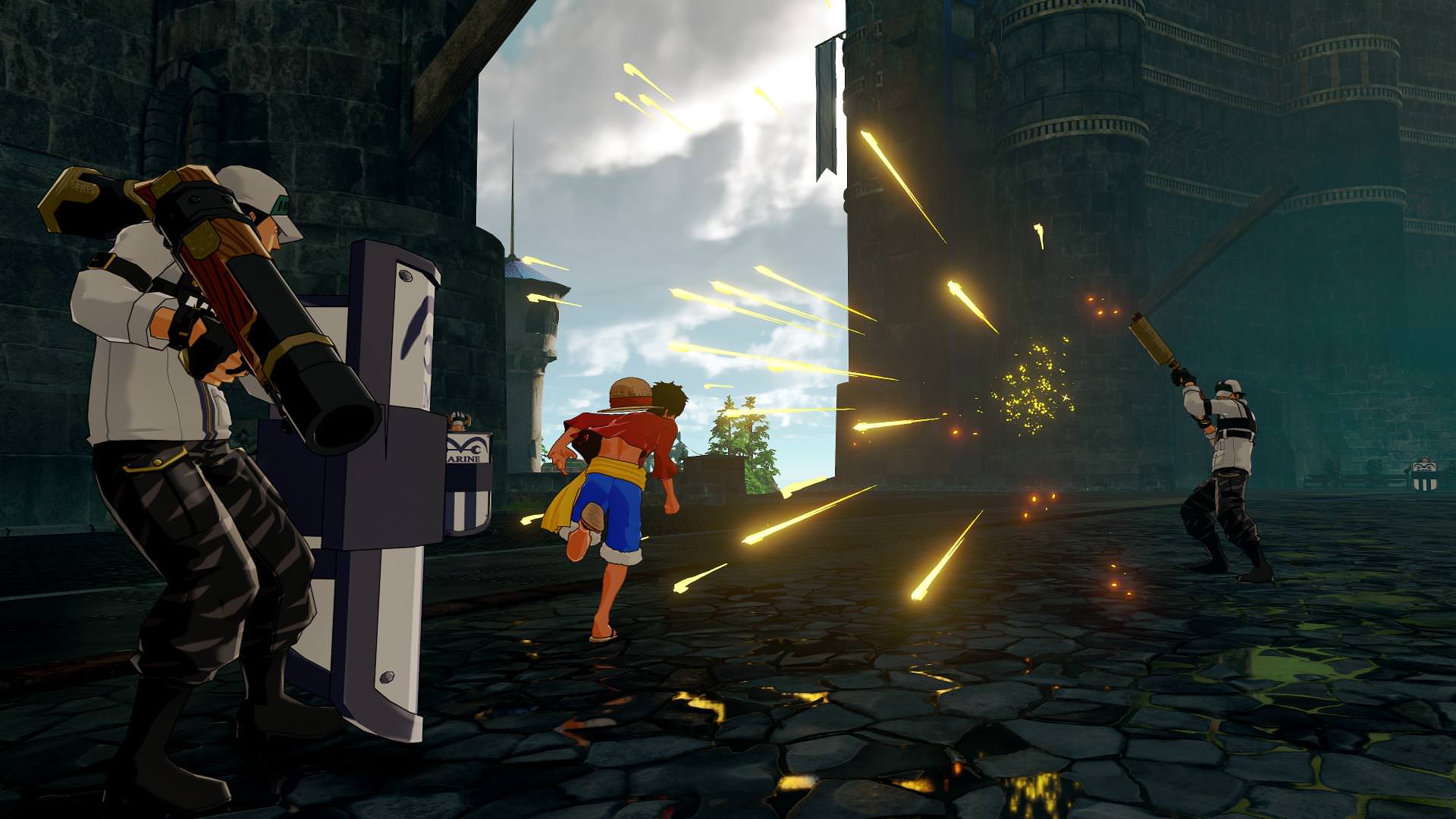
Respect for the Source Material
While the visuals might be considered unique in their approach, most of World Seeker looks to be extremely faithful to the One Piece manga and anime.
Based on this short trailer, World Seeker’s soundtrack evokes the same feelings of grandeur that made the anime soundtrack so iconic. This shouldn’t come as a surprise given that Tanaka Kohei, one of the composers for the anime, is handling the music for the game. If this translation from a recent Weekly Shōnen Jump is taken at face value, tracks from the anime itself may even appear in the game in some form. Even if this is a mistranslation, the fact that Kohei is involved means we can expect a degree of authenticity from World Seeker’s soundtrack. Compared to past One Piece games where soundtracks were mainly comprised of original music, World Seeker looks to be as faithful to the source material as possible.
In terms of the game’s story, Eiichiro Oda has also been confirmed to be involved in the game’s development. While this might be relegated to insuring that World Seeker’s setting feels authentic, I’d like to think that Oda will play a larger role, especially with regards to the narrative itself. Based on the look and feel of the world, the story will likely be original. While this might frighten series’ fans who’ll scream “filler!” in protest, I think an original story outlined by Oda could elevate World Seeker from feeling like “filler” while tying back to the source material in interesting ways.

A Vast World to Explore
My main complaint with prior One Piece games stems from the fact that they’re all essentially linear action games. Unlimited World Red, while open in its mission zones and central hub area, was more or less a 3D hack-and-slash with a deceptive RPG veneer painted over it. Pirate Warriors focused more on hoard-based, Dynasty Warriors-styled gameplay (thus the “Warriors” moniker), while Burning Blood served as a 3D arena fighter along the lines of a Naruto: Ultimate Ninja Storm title. While these games may have had side activities and the occasional NPC conversation strewn in for good measure, overall they sought to let fans experience what it’s like to fight as a Straw Hat pirate.
Herein lies the problem: so much of One Piece lies outside of its battles. From exploring new exotic towns and visiting local shops and taverns to meeting new characters and learning more about the world around them, One Piece places a great deal of focus on its worldbuilding. Without it, One Piece would quickly devolve into a pure battle shonen like Bleach or Dragon Ball.
For seemingly the first time, however, World Seeker finally looks to offer the thrill of exploration and discovery. While it remains to be seen what sorts of missions and side activities may exist in the open world, World Seeker promises to at the very least be the largest and most ambitious One Piece game yet in terms of scope. That has me very excited for what could potentially lie in store.
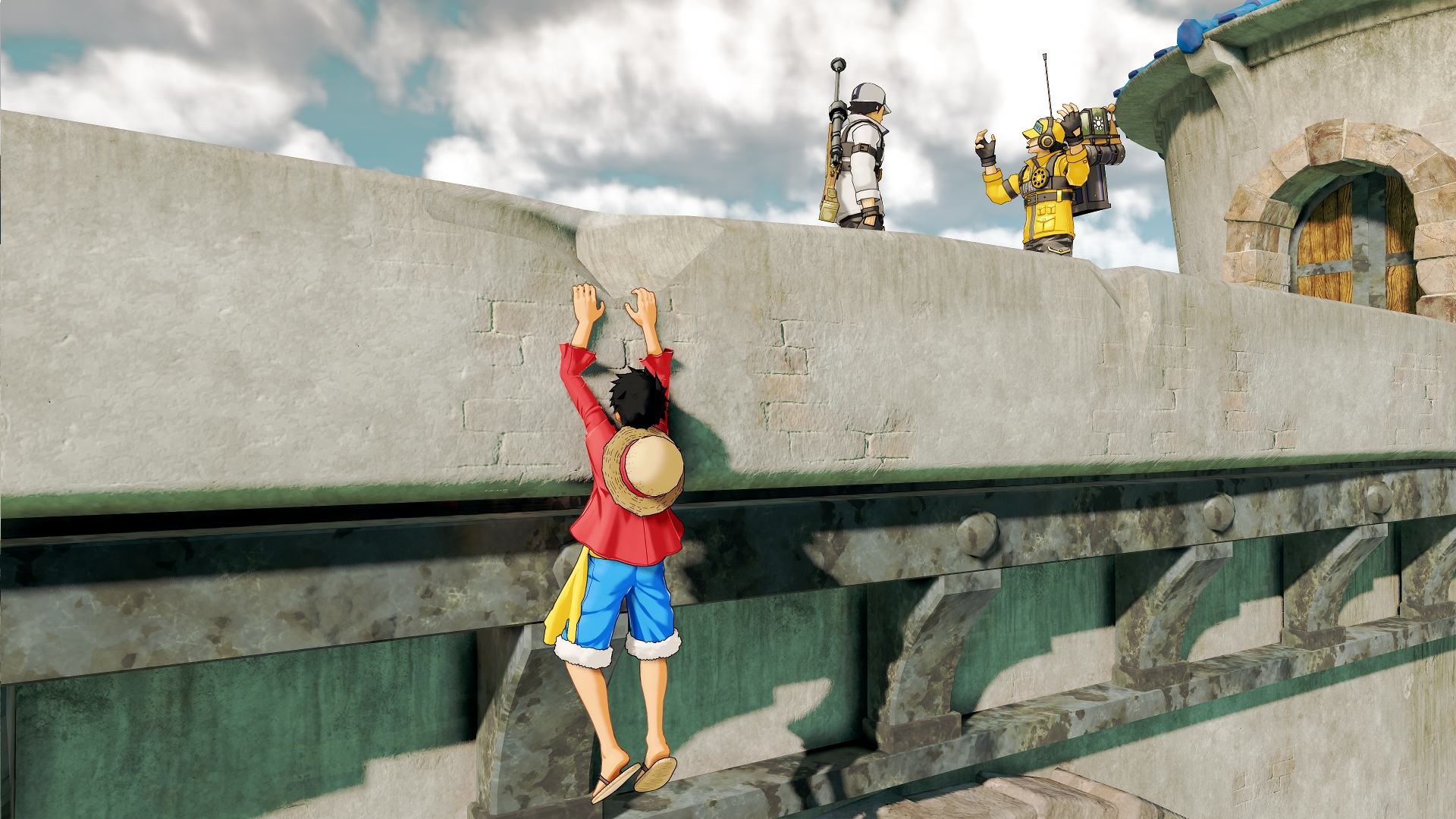
A Central Lead
While this hasn’t been completely confirmed yet, it seems like Luffy will be the only playable character in World Seeker. That isn’t to say that the Straw Hats will not appear in the game—Bandai Namco’s press release states that “the Straw Hat Pirates are back,” and it’s hard for me to believe that the crew would not make at least a cameo over the course of the campaign. However, based on the fact that the story “puts players into Luffy’s point of view,” World Seeker seems to be developed entirely around Luffy and his Gum-Gum abilities.
This is perhaps the biggest reason why I have hope for World Seeker. Past One Piece games had a nasty habit of spreading themselves too thin focusing on a myriad of characters from Zoro and Usopp to Law and Boa Hancock. Not only do these large character casts perpetuate the tradition of One Piece games being relegated to the fighting and hack-and-slash genres, but they also lead to shallow movesets and gameplay with little in the way of innovation.
World Seeker doesn’t have this problem. In focusing solely on Luffy’s movement and attacks, developer Ganbarion can work to really refine traversal and combat in World Seeker. Given the fact that Ganbarion already has experience working with hub traversal in Unlimited World Red, I’m encouraged that they can really nail the feel of being Luffy for this new adventure.
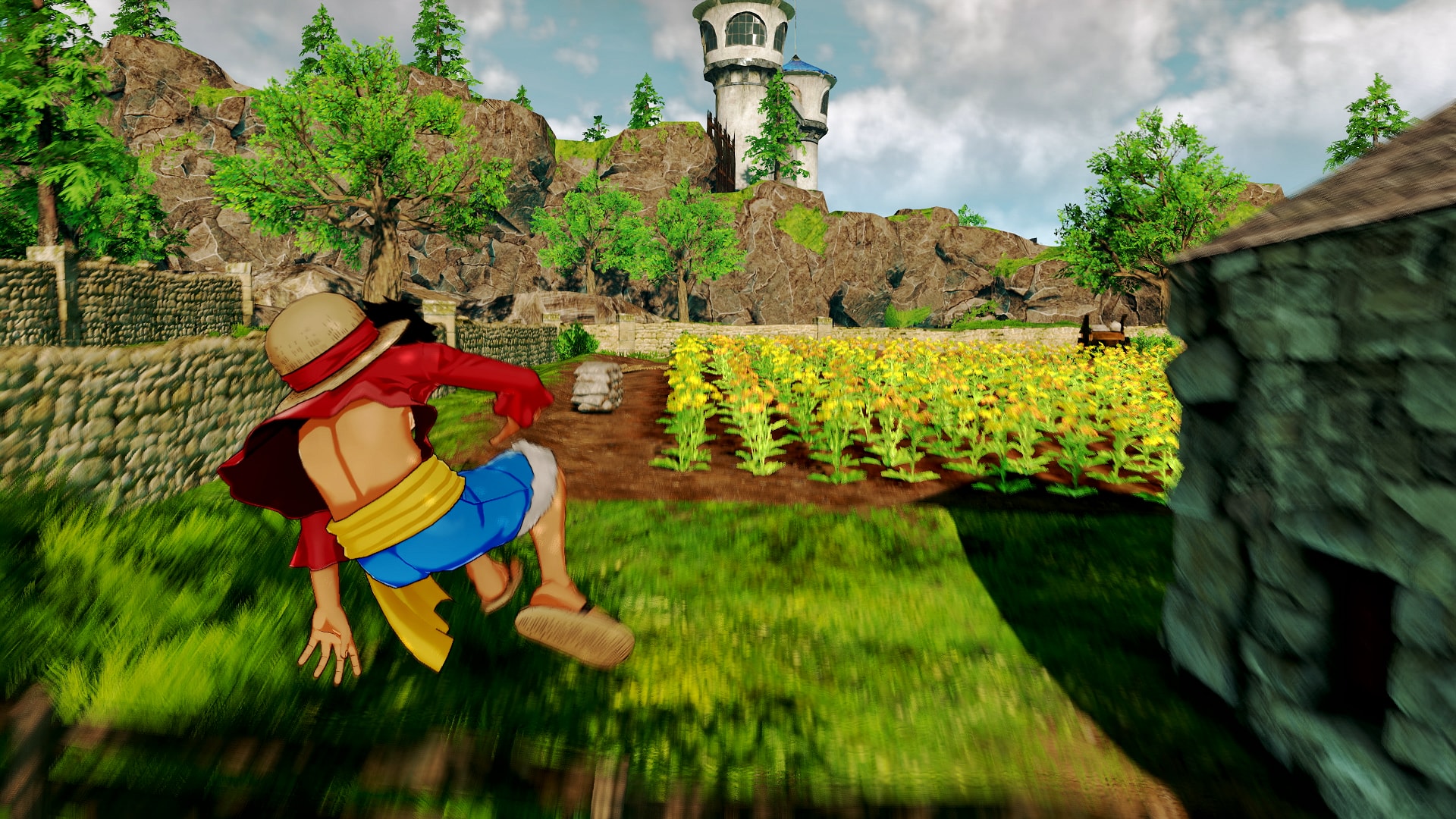
Fluid and Polished
Best of all, World Seeker already looks like it’s coming along really well. Graphically, the game looks more polished than Unlimited World Red in everything from its lighting and shadows to its vivid and fluid animations. Small details are everywhere: Luffy’s hat flails in the wind as he descends from a high surface; his arm folds as he shoots it over to a nearby tree; there are even animations for him vaulting over fences and shimmying across walls.
In combat, we see Luffy make use of his Jet Pistol from a 3rd-person over-the-shoulder perspective to quickly dispatch enemies. We also see more traditional combat with moves such as Gum-Gum Gating and an Armament Haki-powered Bazooka. In every one of these cases, combat looks fluid and seamless. While it remains to be seen how much depth the combat of World Seeker will offer, the fact that players have so much control over Luffy’s various abilities and powers bodes well for the final product.
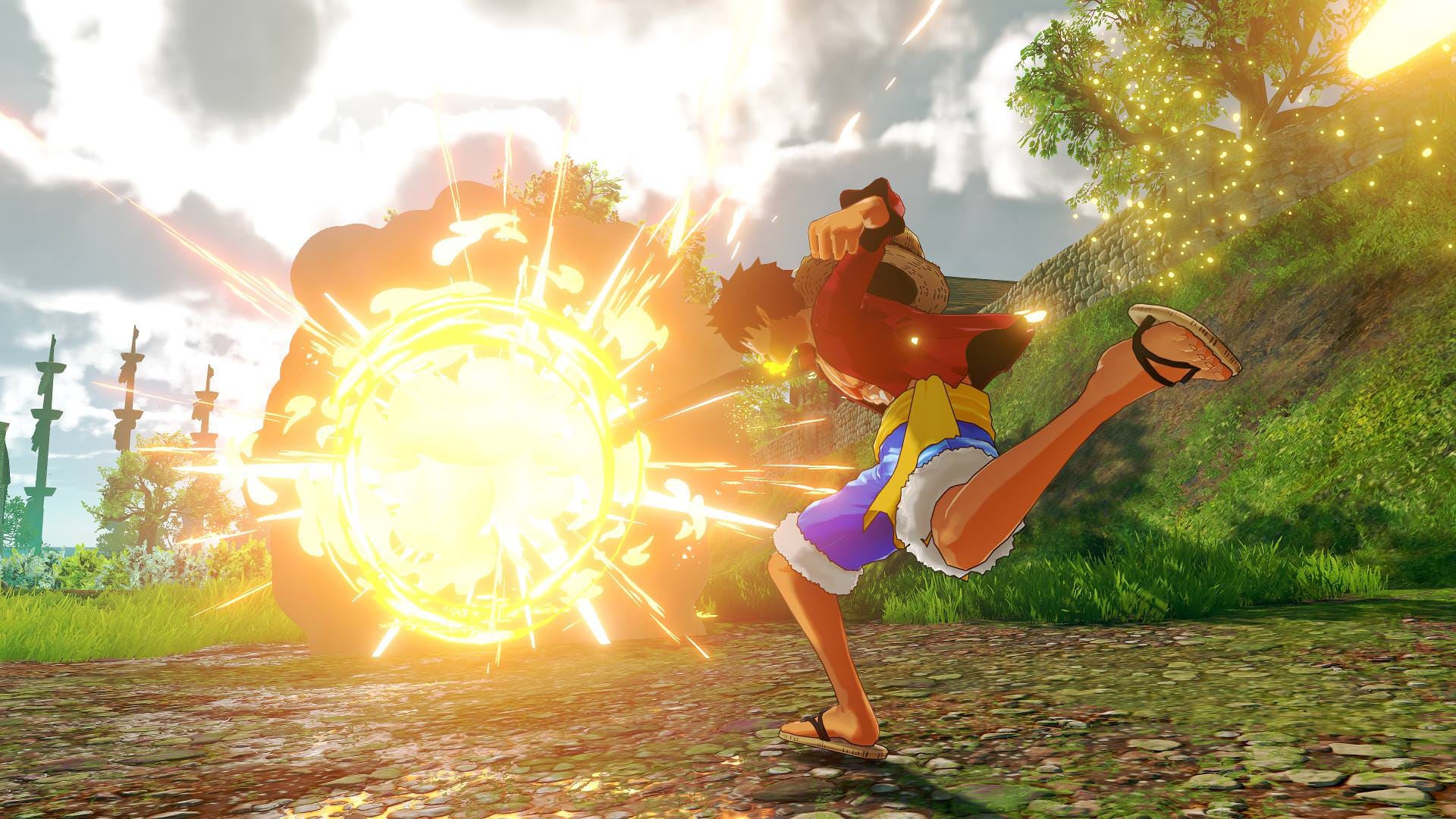
A New Beginning
I’ve already made several points about World Seeker: it’s confident, it’s authentic, it’s massive, it’s focused, and it’s fluid. While these are assertions I’m making based off only a few tidbits of information and mere seconds of footage, I remain hopeful. We’ve only just scratched the surface of the game, and I’m already counting down the days until we get to see more.
One Piece fans haven’t been dealt the greatest of cards when it has come to the world of video games. However, with faith, and perhaps a bit (or a lot) of luck, World Seeker may finally live up to our lofty expectations.
David is the founder of The Punished Backlog. He has a problem finishing games he starts.
Just beat: Donkey Kong Bananza.
Working on: Hollow Knight: Silksong.
Can't wait for: Metroid Prime 4: Beyond.
Follow David on Twitter at @David_Silbert to keep up to date with all things The Punished Backlog.








